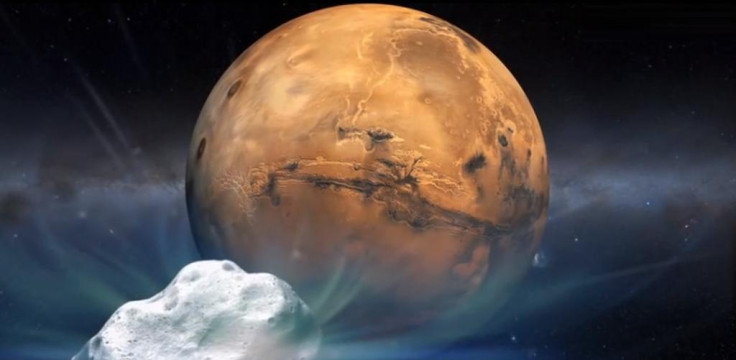Comet Siding Spring Brushes Past Mars in Rare Once in Million Years Event

A comet the size of a mountain brushed past Mars, coming very close to the Red Planet at 6.27 pm GMT on Sunday, in a first in the solar system for a million years.
Travelling at a speed of 56 km per second, Comet Siding Spring (C/2013 A1) approached closer to the Red Planet at 135,000 km, even closer than the 139, 500 km calculated by Nasa, according to a Twitter announcement by the European Space Agency (ESA).
This is one traveller who has been on the journey for a million years and will not be seen again for a few million years as it goes all the way around the sun and back to the Oort cloud region beyond Pluto.
The core of the comet which is about 1.6 km in diameter has been compared to a compact ball of talcum powder.
Composed of highly volatile ices (methane, carbon monoxide), which melt very easily, the comet sheds debris as it sped through the solar system leaving in its wake dust and pebbles that can wreak damage on spacecraft.
The comet had no chance of hitting the Red Planet, reports AFP.
Maven, Nasa's latest Mars orbiter, reported back to Earth in "good health" after spending about three hours ducking a possible collision with the comet's high-velocity dust particles, the US space agency said.
"Mars Odyssey hard at work now to image #MarsComet Siding Spring, after closest approach & before dust tail hits," Nasa said on Twitter, referring to one of its robotic spacecraft.
The comet was discovered by Robert McNaught at Australia's Siding Spring Observatory in January 2013.
There are 5,186 known comets but the number of comets in the outer solar system easily runs to trillions. While some are seen periodically across hundreds of years, there are those like Siding Spring which appear in a million years, being knocked out from the Oort cloud by a passing star. These follow hyperbolic trails that could send them into interstellar space.
Most comets are composed of rock, dust, water ice, and frozen gases such as carbon dioxide, carbon monoxide, methane, and ammonia.
While some astronomers believe comets brought vast quantities of water to Earth when bombarding the young planet four billion years ago, the presence of organic molecules in comets have led others to suggest that life on earth was impregnated by comets.
© Copyright IBTimes 2024. All rights reserved.





